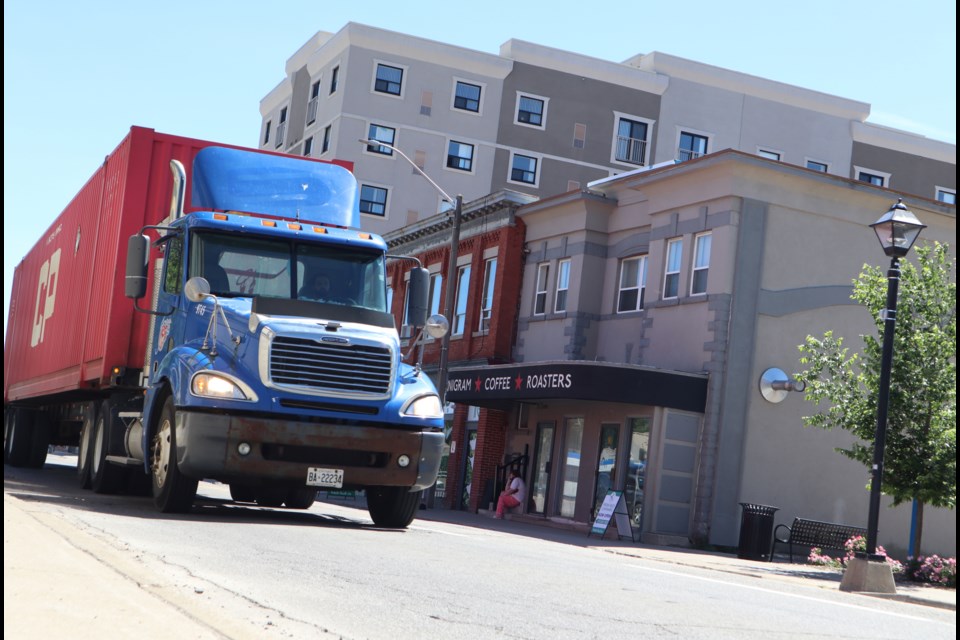The opening of city's new south boundary road, from Highway 24 to Franklin Boulevard, may be imminent, but the hope it could be used to force heavy truck traffic out of Galt’s core will have to wait a bit longer.
Last fall, Coun. Nicholas Ermeta, backed by the Downtown Cambridge Business Improvement Area, presented a motion asking the region to work with the city “to prohibit through heavy vehicle traffic” through Galt’s core “no later than upon the opening of McQueen Shaver Boulevard between Highway 24 and Franklin Boulevard."
The idea is based on the recommendations identified in Moving Cambridge, the city's 2020 transportation master plan.
But as the region inches closer to opening the south boundary road, regional staff is still months away from assessing data for a study needed to inform a bylaw that forces heavy trucks off Ainslie and Water streets.
The City of Cambridge says its transportation engineering staff have been actively participating as a stakeholder in the Region of Waterloo’s study.
Kornel Mucsi, manager of transportation planning for the region, hopes to have answers for the city soon, but said it’s difficult to predict exactly when the study will be presented to council.
Data collection for the study was delayed due to the pandemic, and may require a correction because of the lockdown’s impact on traffic through the core, he said.
It will look at the numbers to determine the origin and destination of trucks that travel through Galt’s core, along with possible impacts a truck prohibition in the core might have on residential areas along Franklin Boulevard and Dundas Street.
It’s a common problem when moving truck traffic, he said, because you're essentially transferring the problem to another area.
“It’s a tradeoff. Downtown is not a place for trucks either. Somehow trucks have to get across the city, he said, because they are part of “the lifeblood of the economy.”
A truck prohibition in Galt’s core would require not only city and regional input to draft a bylaw, said Mucsi, but also a green light from the Ministry of Transportation since Dundas Street would be part of the truck bypass and it is under MTO jurisdiction.
There could also be pushback from industry. Depending on where trucks originate from, the bypass will either provide a better solution for trucking companies or an added cost.
Ainslie Street offers northbound trucks on Highway 24 a direct connection to Hespeler Road and Highway 401. The diversion from Highway 24 past where it turns into Water Street South, avoids the one-way on Water that forces northbound traffic to make a right turn on Simcoe Street. Southbound trucks coming in from the 401 to Highway 24 take Water Street straight through the core.
Diverted truck traffic could be asked to take Franklin Boulevard to and from the new McQueen Shaver Boulevard.
Plans to extend McQueen Shaver Boulevard to Branchton Road and Dundas Street are in the works with construction of that phase set to begin next year. Completion is expected in 2024 in conjunction with the Dundas rehabilitation already underway.
Eventually the bypass is expected to extend to an east boundary road planned by the region in consultation with Puslinch and North Dumfries.
But concerns about its proposed route, connecting to Townline Road, still linger and the region hasn’t changed its forecast for constructing the boundary road from the vague timeline of 2030 to 2041.
Regardless, the first phase of McQueen Shaver Boulevard is expected to open by the end of the summer.
The region is making it official this week by adding the separated four-lane stretch, also known as Regional Road 81, to the regional road system and deeding the land it sits on to the Ministry of Transportation.



